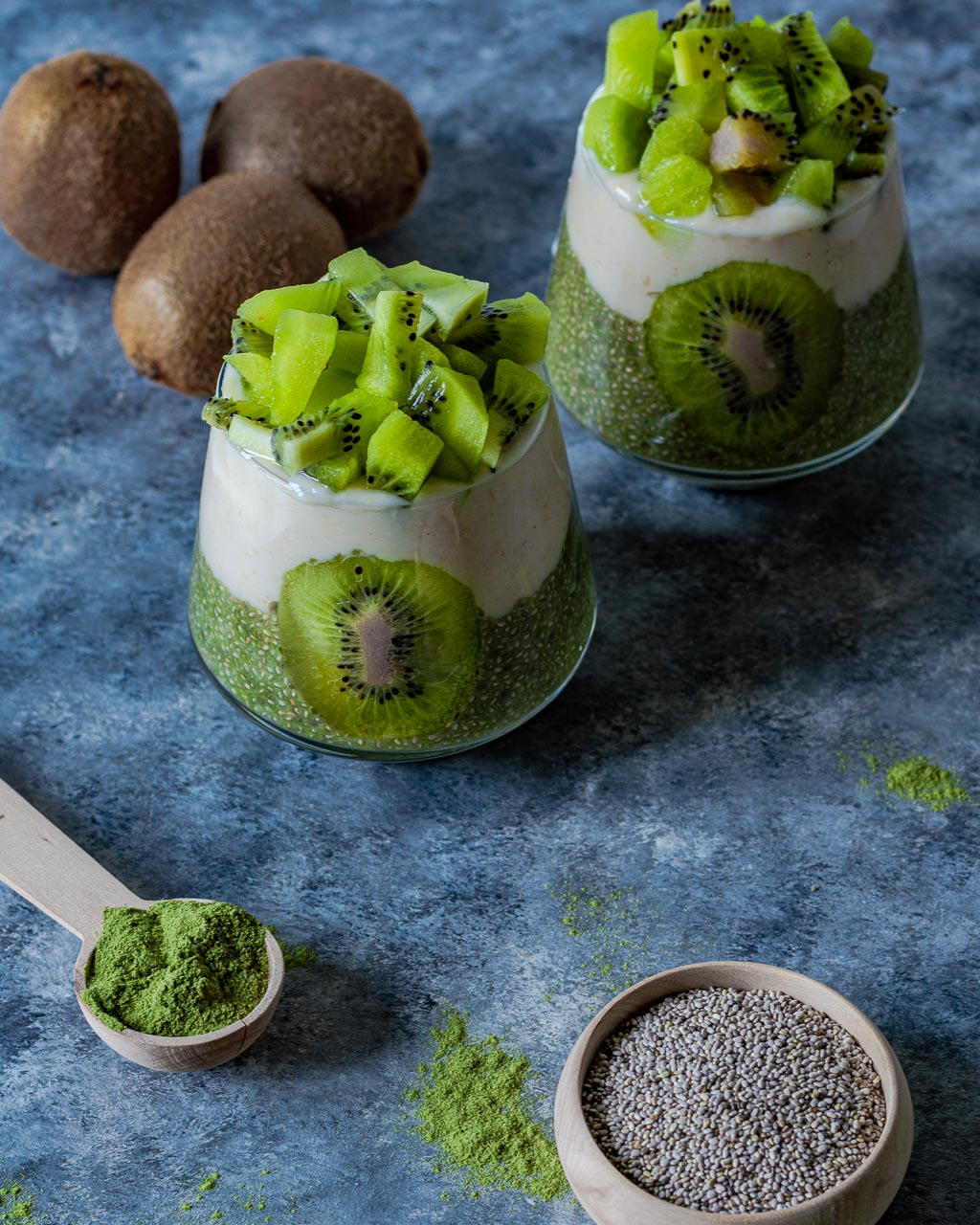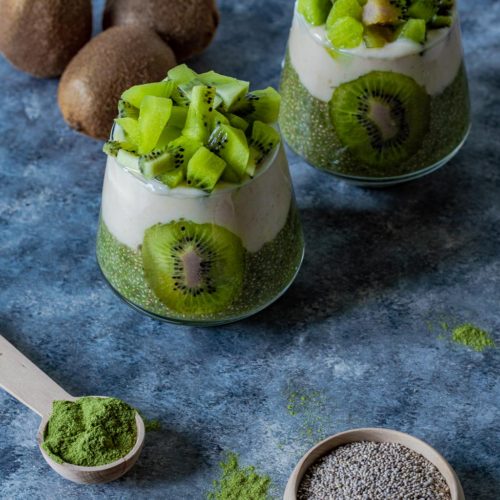This blog post also is available in German.
You may have heard of barley grass or stumbled across a barley grass product online or in a store. But what is barley grass? Why should you take it? And how do you use it after all? You may have asked yourself these questions when you first heard about barley grass. This blog post answers all these questions, including a delicious recipe at the end of the post. If you always wanted to know more about this miracle grass, read on!
What is barley grass?
Everybody knows barley. But what is barley grass? It is nothing other than the seedling of barley itself. After the barley has been sown, it begins to germinate and small green stalks grow from the ground, which have a great resemblance to grass. That is the barley grass.
How is barley grass processed?
As described above, the barley is sown. After a few weeks the green barley stalks are harvested. The barley grass then has a height of about 10 to 15cm. Now it can be processed directly to juice or it is freeze-dried. The dried grass is further processed to powder. The so-called barley grass powder is the best known form in which barley grass is sold. However, there are also barley grass capsules or tablets available.
Gerstengraspulver ist die bekannteste Form, in der Gerstengras verkauft wird. Es gibt jedoch auch Gerstengraskapseln oder Tabletten.
Is barley grass a superfood?
Probably the most important question of this article. In short; Yes, barley grass is a superfood. But what makes these green straws a superfood? Let’s take a closer look at the nutrients in the stalks. Barley grass is rich in:
- Vitamin C –> content is 7 times higher than in oranges
- Vitamin B1 –> content is 4 times higher than in whole wheat grain
- Vitamin B12
- Vitamin K
- Calcium –> content 11 times as high as in cow’s milk
- Iron –> iron content 5 times as high as in spinach and broccoli
- Zinc –> content comparable to sources of animal origin
- Lunasin
- Chlorophyll
- Flavonoids
The nutrient profile clearly shows the positive properties of barley grass. Especially when it comes to calcium, vitamin C and iron content, barley grass is a great choice to meet your daily nutritional needs. For vegans, barley grass powder is also a great option for adding calcium, iron, B vitamins and zinc to the body. B12 supplementation or any other supplementation in case of a deficiency, cannot be covered with barley grass powder from my point of view. However, if the powder is incorporated into the daily diet, such deficiencies might be prevented and the body gets naturally supported. You have trouble eating healthy and balanced in your hectic everyday life? Then barley grass can be an enrichment.
The powder is said to have other abilities such as a positive effect on blood sugar levels, cholesterol, acid-base balance, immune system, cancer, etc. Barley grass powder is also used in detox cures and it is said to reduce weight. I dissociate myself from such generalizing statements in principle. I strongly believe that a powder alone cannot cure affluent diseases such as high cholesterol or diabetes. With many diseases complex processes are in the background and the recovery, respectively the progression of a disease depends on many factors. However, I believe that barley grass powder, in combination with a healthy diet, sufficient exercise, as well as stress reduction and fresh air, can have positive effects on overall health. The positive effect of barley grass on the immune system is understandable if you only look at the nutrient profile shown above.
In the end, each of us is an individual and must find out for himself/herself what is good for him/her.
Is barley grass sustainable?
It depends on the individual product. There is barley grass powder from New Zealand, but also from Germany. It is always best to buy from a local producer who has an organic certificate. If this is the case, barley grass is absolutely sustainable. If you live in Europe and buy barley grass products from overseas, it`s not sustainable. The Jomu barley grass powder tested for this article is grown and produced in Germany (organic quality), in which case I can stand behind the product with a clear conscience.
Advantages & disadvantages of barley grass
The benefits of barley grass are obvious if you look at the nutrient composition above. Nevertheless, a short list of the advantages and disadvantages of barley grass follows.
Advantages:
- highly concentrated in vitamin C, zinc, iron, calcium & vitamin B1
- favourable nutrient profile to cover daily needs
- strengthens the immune system
- little effort in preparation
- easy to take
- suitable for people with little time
- sustainable & vegan
- possible positive characteristics on the general health condition
- depending on product gluten-free & therefore suitable for gluten intolerance
Disadvantages:
- taste needs getting used to (I personally like the taste)
- high price
- low solubility in liquids (especially water)
- side effects, such as gastrointestinal discomfort or headache at the begining of the intake
- barley grass can cause allergies in certain people
- Gerstengras kann bei gewissen Leuten Allergien auslösen
Personal experience
The team from Jomu was so kind to send me a sample pack of their barley grass powder for testing. The recommended daily intake is 3 x 1 tsp. I have limited myself to 2 tsp of powder once a day as this was easier to integrate into my daily routine. Mostly I simply put the barley grass powder directly into a large glass of water and drank it. For the first 5 days I had headaches practically every day, but these went away afterwards and I had no more side effects. Otherwise I did not feel any changes.
My conclusion
Barley grass is a great addition to my pantry and thanks to its range of nutrients it is definitely a product I can recommend. Especially because it is natural. It’s an excellent option for meeting your nutritional needs, especially if your diet is one-sided, you don’t eat enough fresh vegetables and fruits, or don’t cook your own meals regularly.
I personally will not take the product every day, but consume it as I please. On the one hand, because it is simply a question of price. In these 14 days I have used up almost 2/3 of the 300g pack and with a daily intake that definitely busts your wallet. On the other hand, we eat a relatively healthy diet and cook daily with fresh ingredients. Cooking is my passion and accordingly I believe that a daily intake of barley grass powder is not necessary for me.
How does barley grass taste & what can you use it for?
Barley grass powder, as the name suggests, tastes like grass or as my employees lovingly said: “It tastes like a farm”. It is well known that taste buds are different. I personally like the taste of the powder, which is why I was perfectly fine just mixing it with plain water. In case you`re not a fan of it`s taste, you can easily mix it into other drinks such as juice, smoothies or plantbased milk. A barley grass latte, for example, tastes incredibly delicious. You can find a recipe for this in my FREE Sustainable Superfrood Recipe Ebook.
You don`t like these suggestions? No problem, mix the barley grass powder into your granola, make Energy balls or nice cream with it or add it to your porridge, Overnight oats or chia pudding. At the end of this article you will find a recipe idea for a barley grass kiwi chia pudding.
You would like to try barley grass, but don’t feel like buying a whole pack? No problem at Jomu you can order a free trial pack for 1-2 servings. Just try it out!
If you are interested in superfoods, then download my FREE 10 recipes ebook with sustainable superfoods.
Read you soon,
Sarah
Barley Grass Kiwi Chia Pudding
Ingredients
- 425 ml almond milk sweetened, organic
- 100 g white chia seeds organic
- 2 tbsp rice syrup organic
- 2 tsp barley grass powder organic
- 2 kiwi organic
- 250 g plantbased yogurt organic
Instructions
- Add the chia seeds, barley grass powder, almond milk and rice syrup to a pan. Mix well and slightly warm the liquid.
- Peel kiwi and cut off two slices. Press one kiwi slice on the inner side of each glass. Make sure your glasses are completely dry in order for the kiwi to stick to the wall of the glass.
- Remove the chia pudding from the stove, let cool down and make sure to stir regularly to avoid clumping. As soon as the pudding starts to thicken up but is still pourable you pour it into the glasses.
- Put the pudding into the fridge for at least one hour or better even overnight if you have the time.
- Cut the remaining kiwi into small cubes. Use plantbased yogurt to top off your chia pudding glasses and sprinkle on the kiwi cubes.




